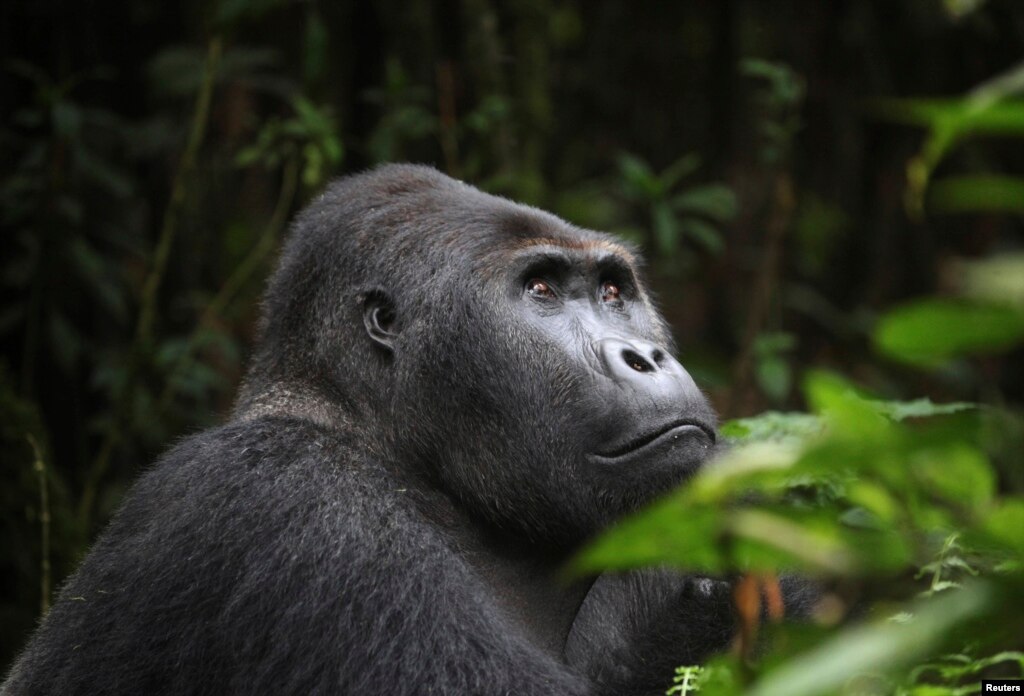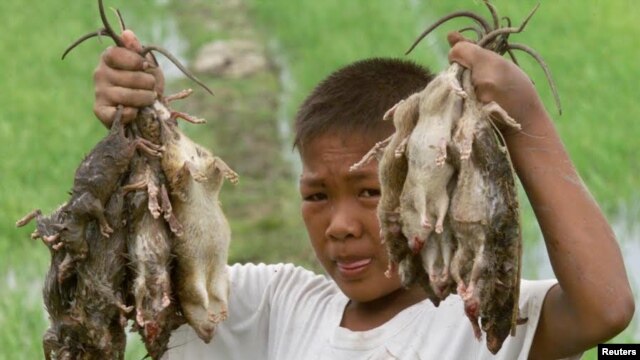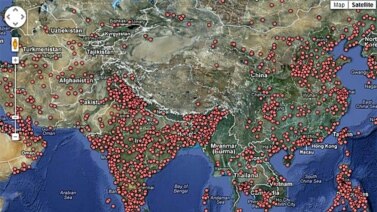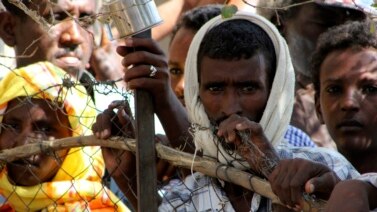
The Ebola virus has killed more than 1,000 people in West Africa. But it also threatens wildlife, like the severely endangered western lowland gorilla. VOA’s Steve Baragona reports that the spread of Ebola shows how animal diseases spill over the barrier between animals and humans to infect people.
What killed the chimpanzee?
One day in 1996, boys from a village in northern Gabon found a dead chimpanzee in the forest. They took it home, and the villagers prepared the animal for food. The World Health Organization says this started an Ebola outbreak that killed 21 people.
Years later, writer David Quammen made a reporting trip to Gabon. He met two men from that village who were there during the Ebola outbreak. They said their families were not the only ones affected.
“At the time Ebola was hitting their village, they saw something strange. Nearby in the forest, they saw a pile of 13 dead gorillas.”
The killer? Ebola. Mr. Quammen says for the western lowland gorilla, Ebola has been devastating -- extremely destructive. He spoke to VOA on Skype.
“There has been an epidemic wave of death passing through gorilla populations across central Africa, a wave of Ebola that has been killing them as well as occasionally killing humans.”
Peter Walsh of the University of Cambridge in England studied gorillas in a Congolese wildlife protection area in the early 2000s. At that time, two Ebola outbreaks struck. Ninety to 95 percent of the gorillas simply disappeared.
Mr. Walsh says he and his team estimated that Ebola would destroy 45 percent of the population in just one generation.
Mr. Walsh participated in writing a study of the situation of the western lowland gorilla. The study resulted in placement of the animal on the critically endangered list.
Disease and the Spillover Effect
For David Quammen, the story of the 13 dead gorillas outside the Gabon village shows how new infectious diseases are connecting humans and animals.
Mr. Quammen wrote a book called Spillover: Animal Infections and the Next Human Pandemic. This book describes how these diseases jump, or move, from animals to people at an increasing rate.

This is not new.
Bubonic plague, for example, jumped from rodents like rats to humans through infected fleas, a tiny biting insect. That plague killed as many as 60 percent of Europeans in the 14th century.
But David Quammen says many new diseases, especially viruses, seem to be developing.
“Something seems to be different because we’ve seen a lot of these new diseases, especially viral diseases, emerging over the last five or six decades. And that, of course, raises the question of, why? What’s different now?”
Mr. Quammen says one reason is that the human population is going deeper and deeper into habitats – or living areas -- where humans are finding new creatures.
“There are now seven billion of us on the planet. We’re going into these diverse ecosystems. We’re cutting down trees, we’re building mines, we’re building villages and roads. And we’re coming in contact with these animals. And we’re giving the viruses those animals carry the opportunity to jump to a new host, to spill over into human populations.”
Contamination Is A Two-Way Street
In the world of diseases, contamination -- spreading germs -- goes two ways.
Peter Walsh says ecotourism has helped protect the living areas of apes. But he says people taking those environmental trips are killing the apes they come to see. He says this happens because people bring their viruses with them.
“Human respiratory viruses are the number one source of death in habituated chimpanzees and gorillas. In chimpanzees, half of the deaths are caused by human respiratory viruses.”

Mr. Walsh wants apes that come near tourists to receive vaccine against human diseases such as measles.
He and his scientific team also call for better enforcement of laws against harming the severely endangered western lowland gorilla. In addition, they are asking for better protection of their decreasing habitat.
But the gorillas are still defenseless to a disease like Ebola that kills both humans and our wild relatives.
I’m Anna Matteo.
This story is based on a report by VOA reporter Steve Baragona. It was adapted by Anna Matteo for Learning English.
Words in the News
Epidemic – n. (medical) an occurrence in which a disease spreads very quickly and affects a large number of people
Habitat – n. place where a plant or animal naturally or normally lives or grows
Infectious – adj. capable of being passed to someone else by germs that enter the body
Contaminate – v. to make (something) dangerous, dirty, or impure by adding something harmful or undesirable to it
Ecosystem – n. everything that exists in a particular environment
Bubonic Plague – n. a very serious disease that is spread especially by rats and that killed many people in the Middle Ages
And that's Words in the News. Now it’s your turn to use these words. In the comment section, write a sentence using one of the words and we will do our best to provide feedback on the use of vocabulary and grammar.





